By the time we awoke in the shadow of the old Langtry schoolhouse, Jay had already packed up and left town and Lloyd and Louis were busy loading their belongings onto the tandem. We bade them farewell and off they set, still on time for a world record attempt despite our efforts to slow them down to our more leisurely touring pace.
As the sun rose over Mexico, barely a stone’s throw to the south of us, we said our goodbyes to Roy Bean’s kingdom, but not before checking out some of the numerous historical markers around town. We’ve seen more historical markers in Texas than just about anywhere in the U.S. and while many are great sources of information, a few leave you wondering as to their historical significance. It has led to Terry and I dubbing a few of them as ‘hysterical’ rather than historical markers.
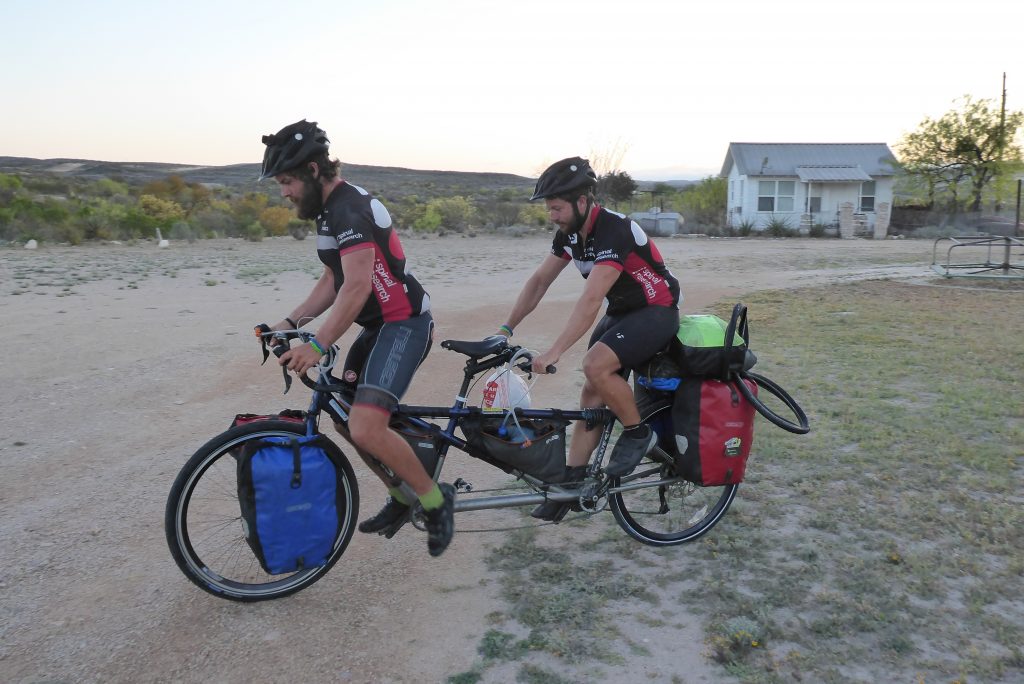
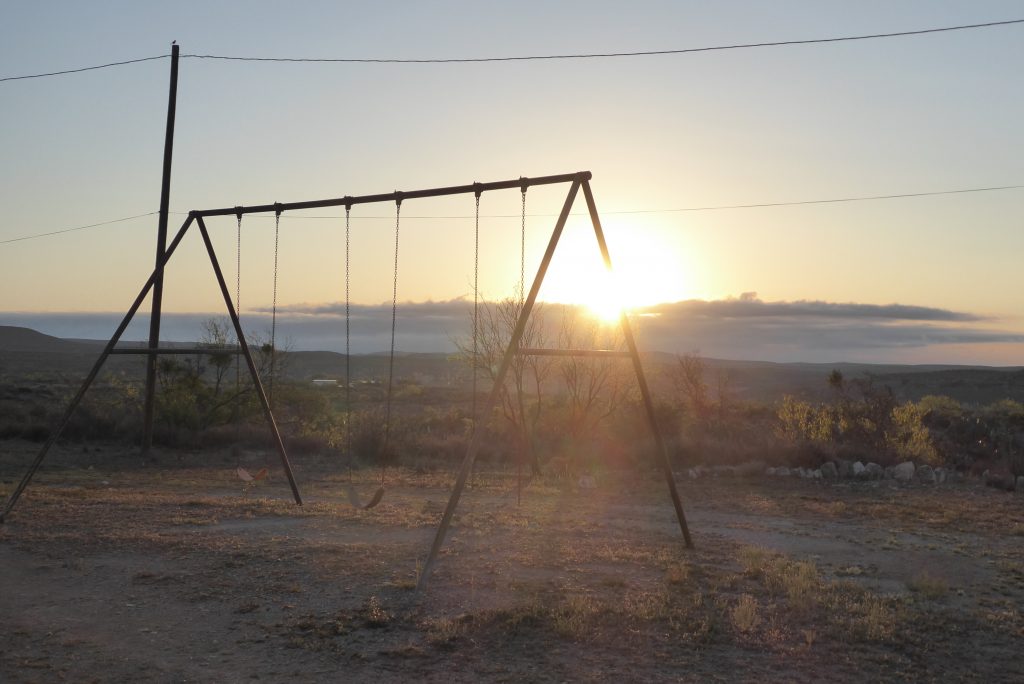
For example there’s a marker outside the schoolhouse where we slept, despite it only being built in 1934. If signs were thrown up for buildings of that age in the U.K. they’d pretty soon outnumber the country’s population ten to one and the entire economy would collapse under millions of insurance claims from people stumbling into them and knocking themselves out.
But then again, we are spoilt. In my village, Hockley in Essex, the local church is just about to celebrate its 800th birthday whereas in Terry’s home city of Norwich, work on its impressive castle began shortly after the Norman Conquest in 1066. Compare that to the state of Texas which formally became the 28th state of the Union as late as 1846, although it existed as the Republic of Texas, which was a sovereign nation, from 1836.
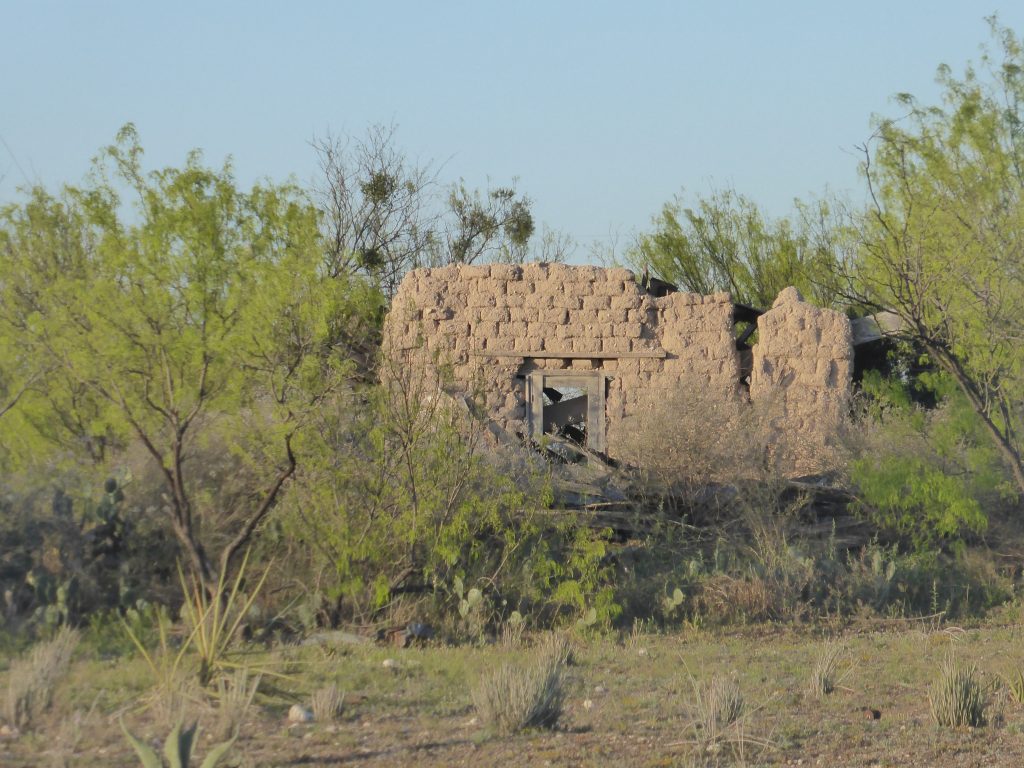
So I guess that since Langtry School was built within its first century of existence then the marker is justified and we did discover that Vashti Skiles was the town’s longtime teacher and hence its name under its new purpose as a community centre.
“It struck us that Roy Bean and Donald Trump have a lot in common”.
Passing the Trump 2020 flags (it struck us that Roy Bean and Donald Trump have a lot in common) we headed back to the Visitor Center to use their bathrooms and also discovered that our first planned stop for food and water – almost 40 miles away in Dryden – was a no-goer.
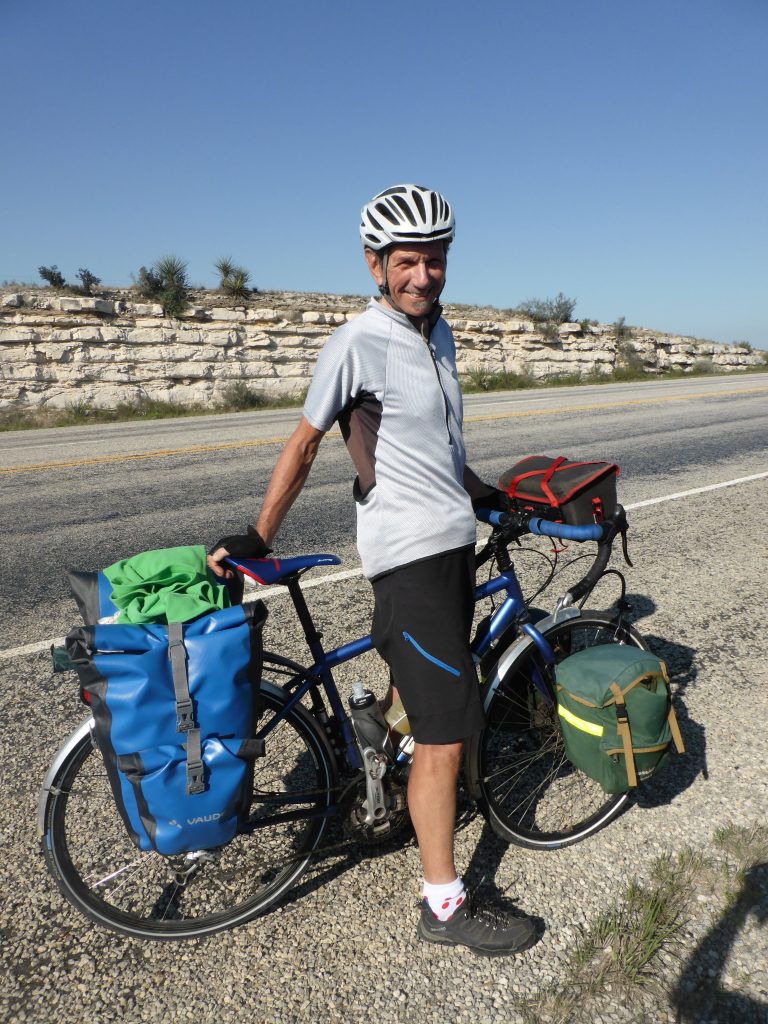
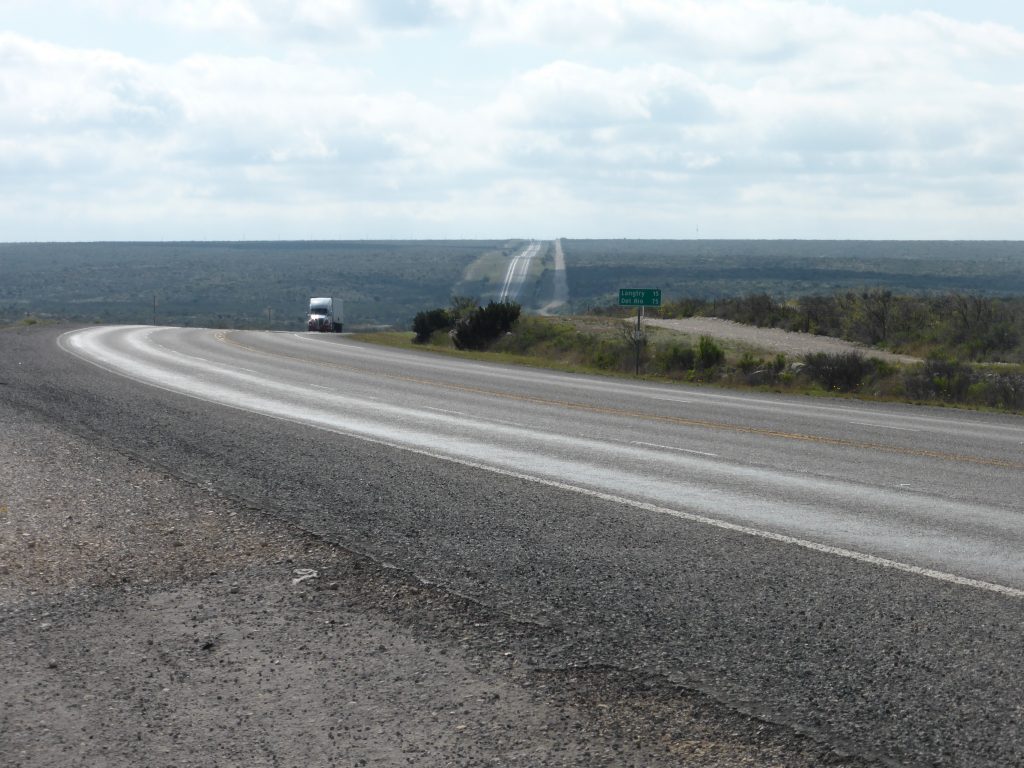
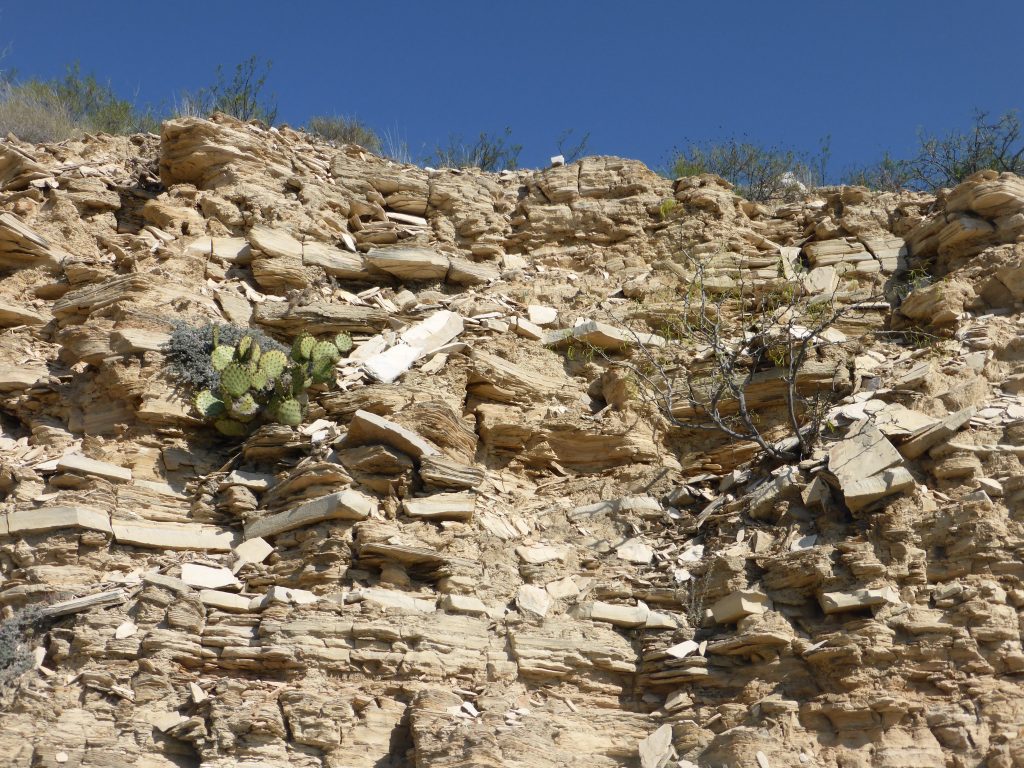
“There’s nothing there,” said the lady behind the counter at the Center, then countered it by saying the shop might still be open, but she doubted it. She also warned us about rattlesnakes. “They are just waking up from hibernation at the moment so they are irritable and hungry, so you’ve got to be careful,” she warned.
“Today we’d have no help from a tailwind and the temperature was already rising”.
It seemed the risks of today’s ride were building up. We were now faced with cycling 60 miles to Sanderson with nothing in between, so we filled our water bottles to the brim at the museum fountains, then checked in at the garage to buy some extra bottles. With that we were back on the 90 and started towards our final destination, Sanderson, which at just under 3,000ft meant a 1,500ft climb. Today we’d have no help from a tailwind and the temperature was already rising.
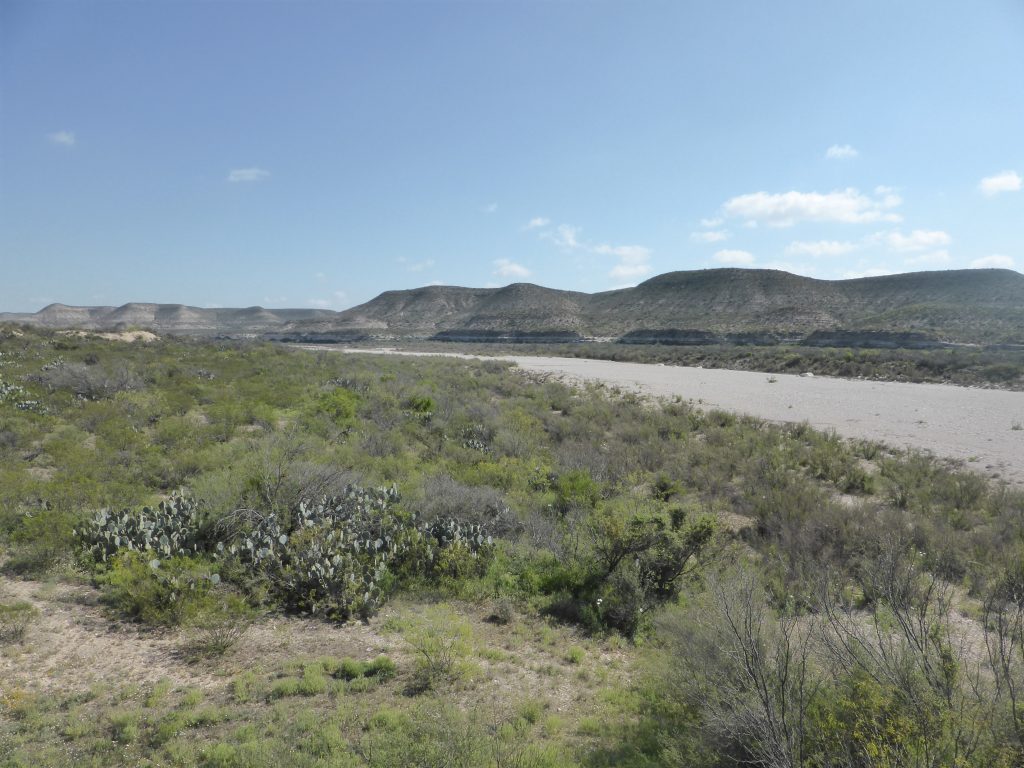
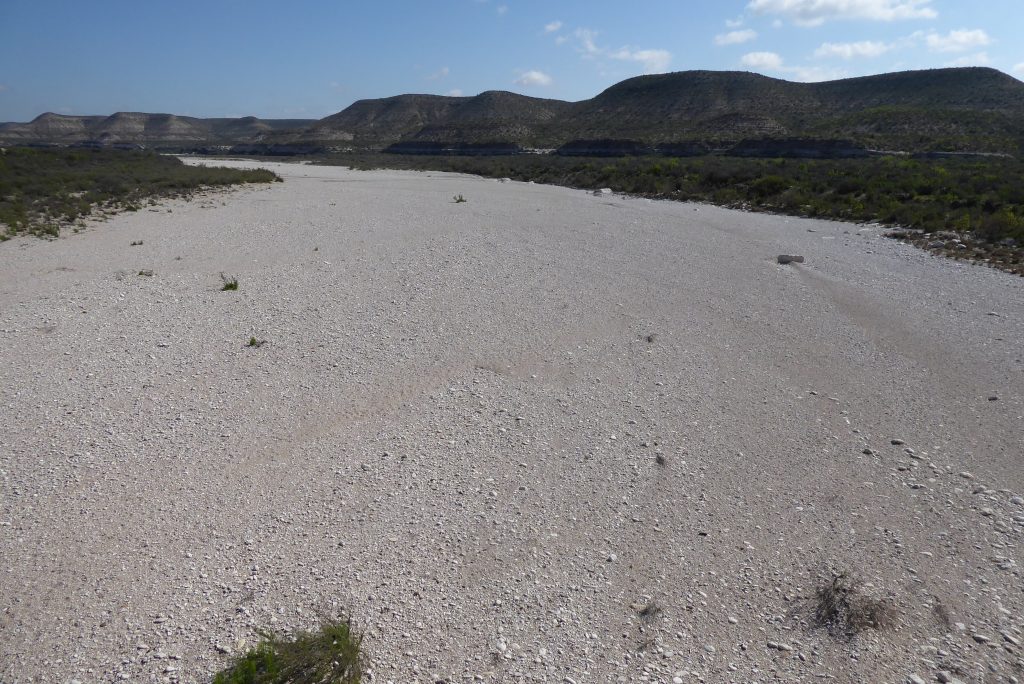
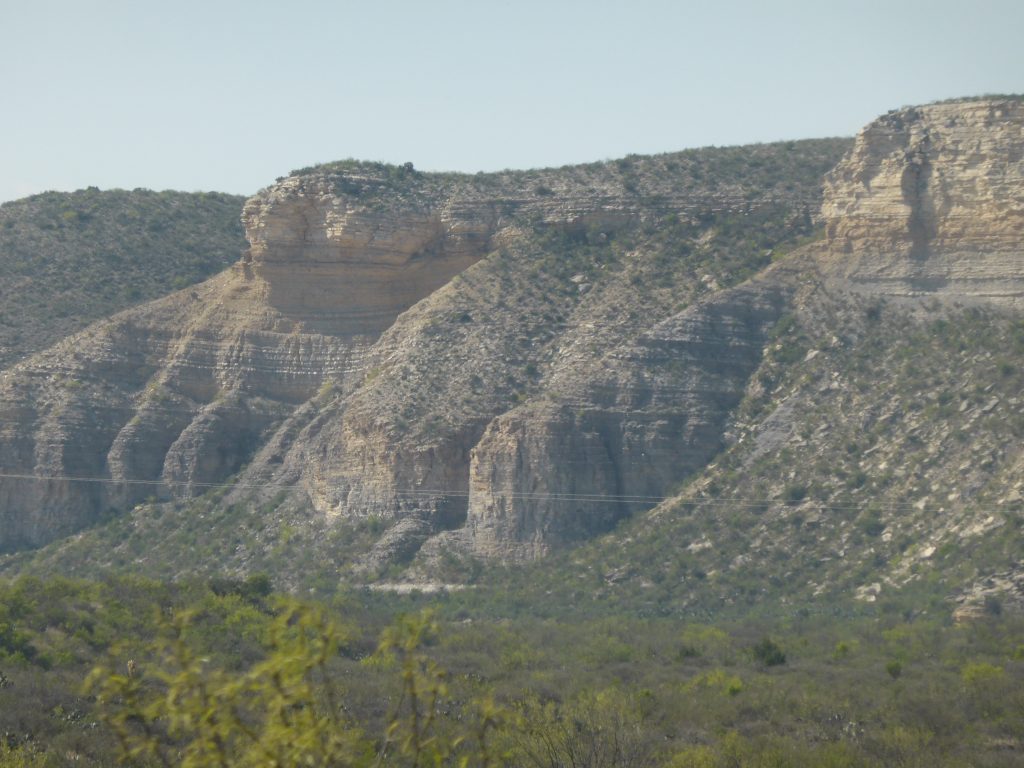
The views were huge as we passed through Lozier Canyon, with rocky bluffs of eroded sedimentary rocks all around us. The land was becoming more arid with less and less vegetation, but still with the low roadside flowers adding a bit of colour to the otherwise almost monochromatic landscape.
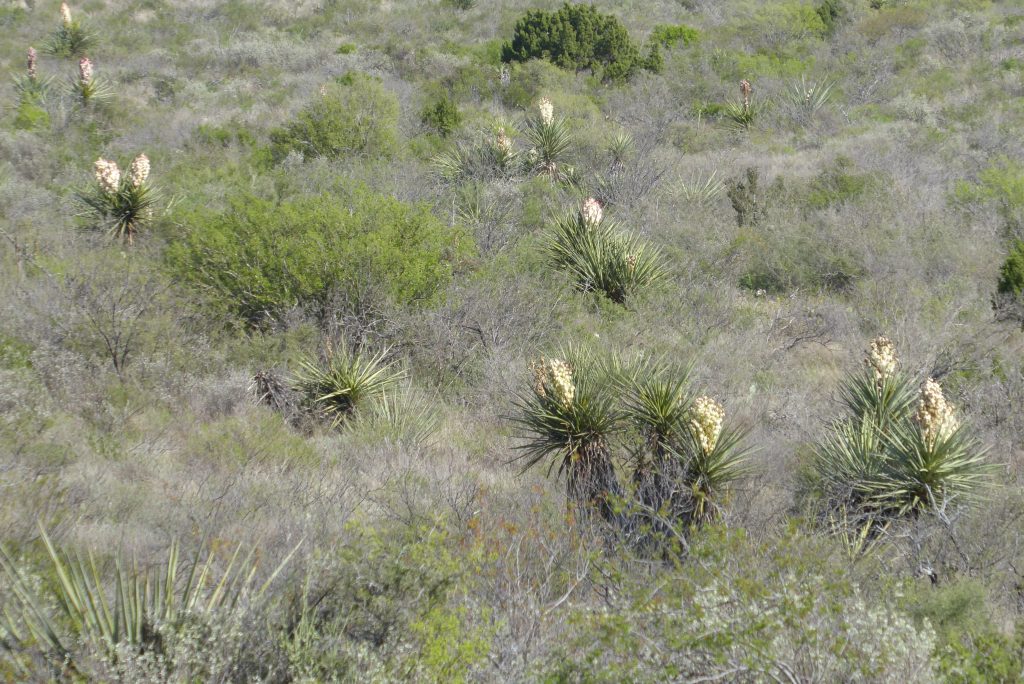
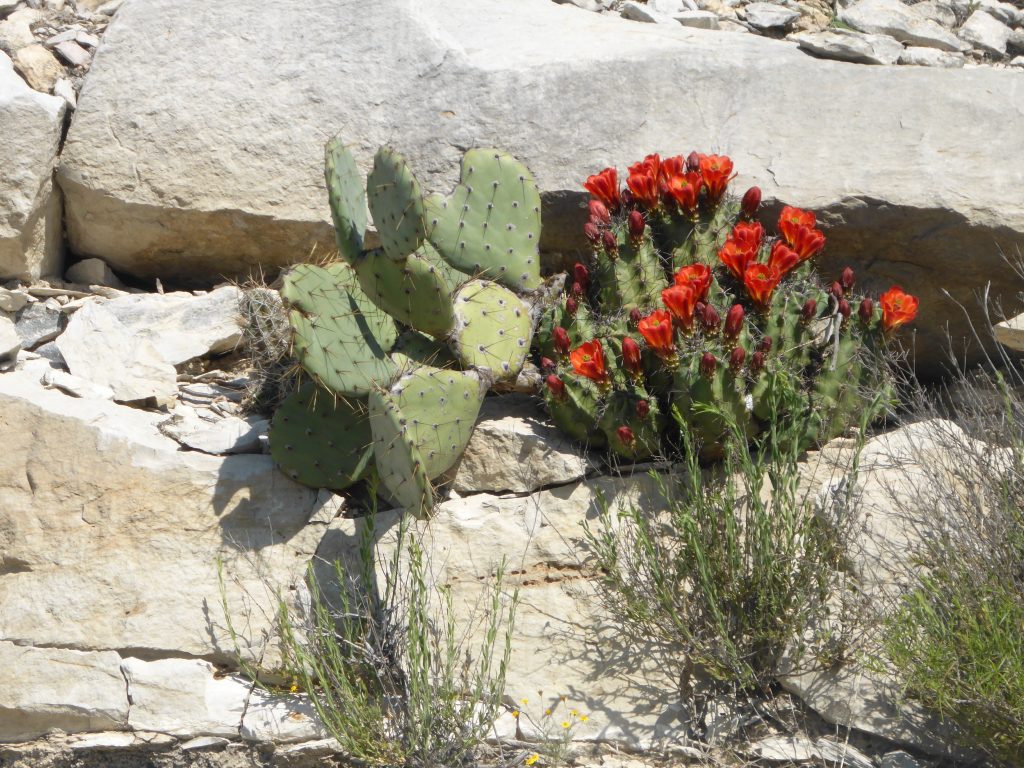
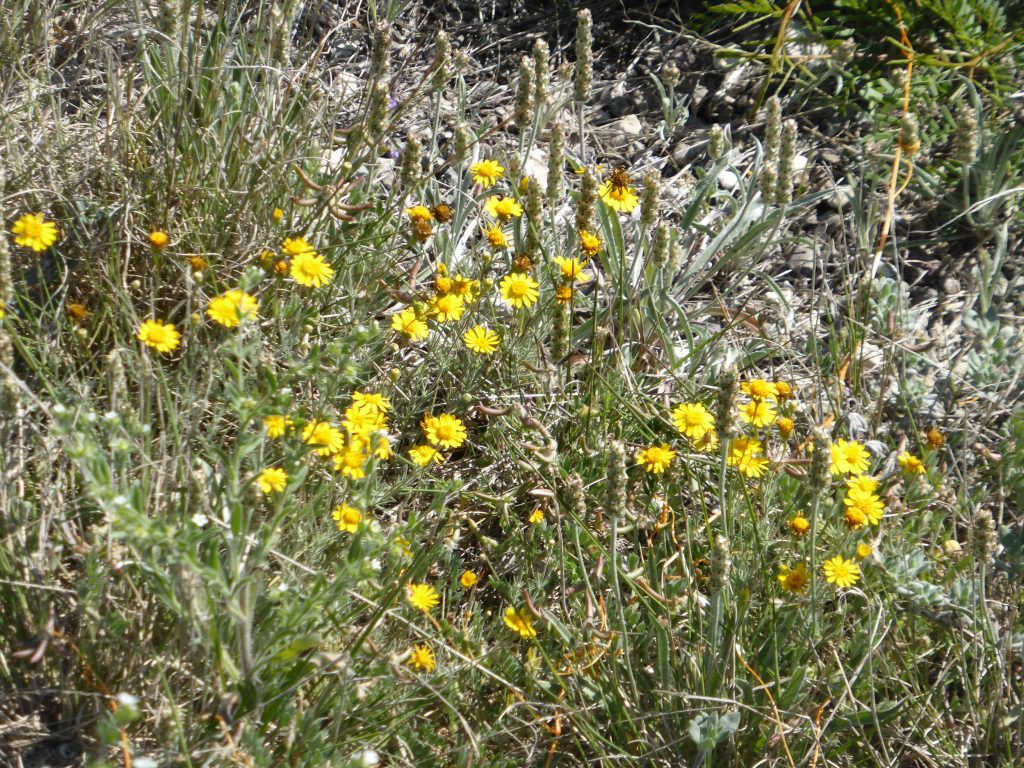
It’s easy to think there’s nothing here in the desert, but if you stop, look and listen for a few minutes there’s life everywhere. There are numerous birds singing, insects buzzing and so many different colours of wild flowers. It really is quite beautiful and reminded us of the high plains of Colorado.
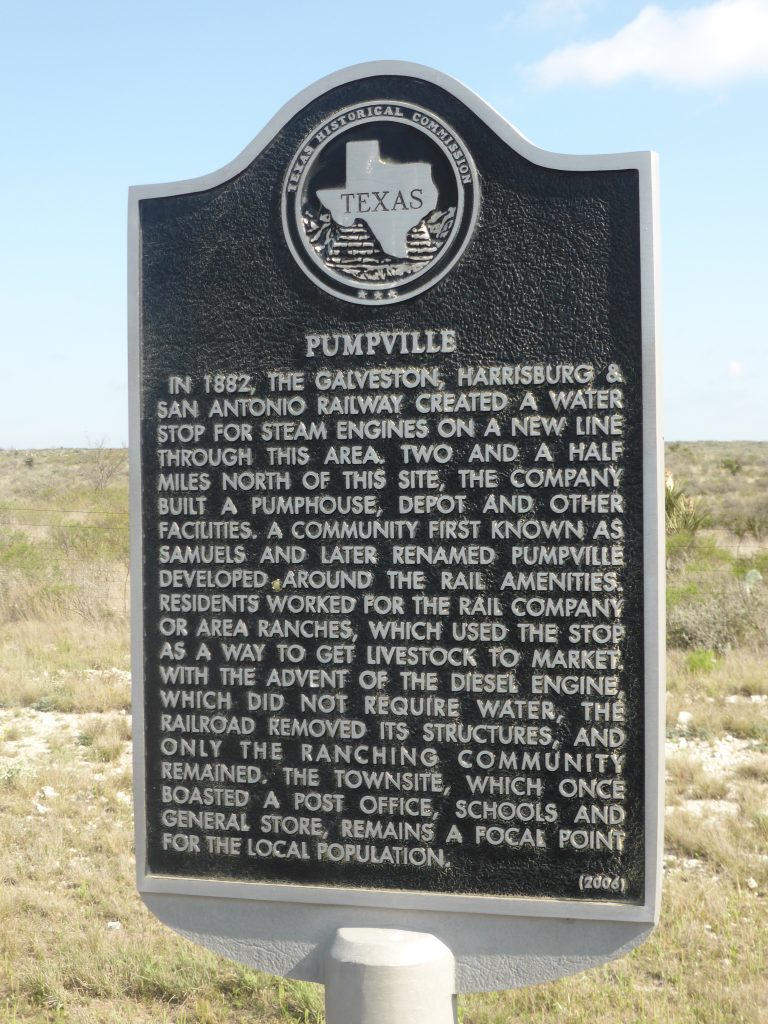
The traffic was light – mostly big trucks and RVs heading to Big Bend State Park – but our minds were clearly focused on the climb – and the heat. We stopped for lunch in the shade of a picnic area and met Nic and Liam from Yorkshire. They had been traveling through Australia and Asia and their last trip before going home was a tandem ride across the Southern Tier. Liam was into classic cars and was a furniture maker and looking for advice at TV presenting.
A little earlier they’d bumped into Lloyd and Louis (surely two English tandems riding across Texas is a bit out of the unsual!) and they also told us about a big group of American Southern Tier cyclists heading east who would be staying in Sanderson tonight. Nic and Liam had enjoyed their hospitality the night before and were sure that as long as we rode into town by 6pm we’d be offered the same warm welcome.
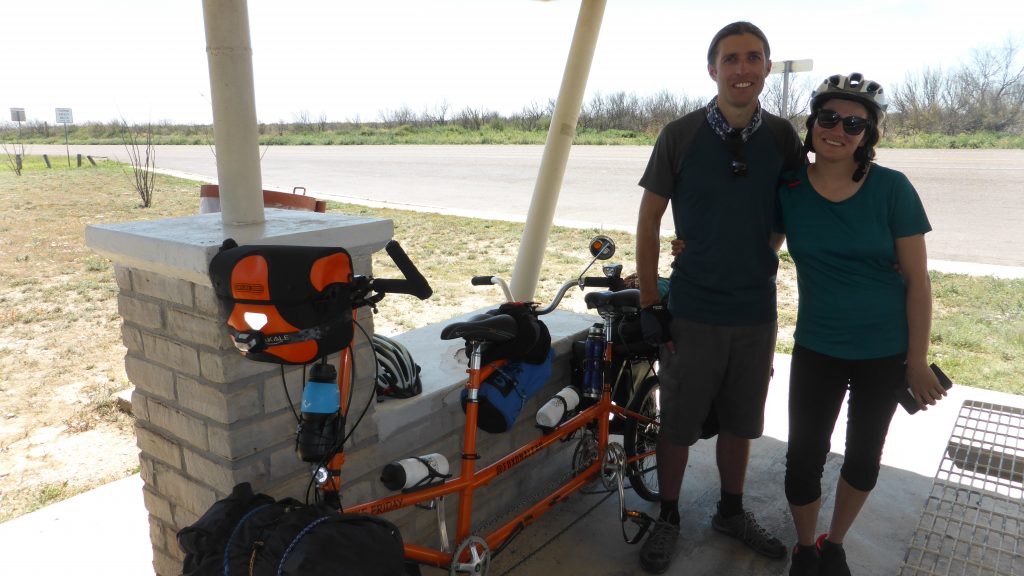
As well as giving us numerous tips on the road ahead, the couple also said they’d been into a nearby cafe where the waitress had a gun on her waist. Also taking shelter with us were Michael and Glenda from North Carolina in their new Winnebago and on a trip to Big Bend. At the mention of guns we expected them to give the same ringing endorsement of guns we’d heard right across most of the south, but there was none of it.
“I don’t understand this country’s obsession with guns,” said Michael. “I was a police officer but have not seen the need to carry one since.”
Michael and Glenda were our sort of people. They made sure all our water bottles were full to the brim then waved one pair of Brits goodbye as they headed east and the other pair as they rode west. Personally with several hours of climbing still to go, a niggling headache and the heat becoming increasingly draining, I’d have been quite happy to have been waved into the back of their air-conditioned RV for a lie down instead!
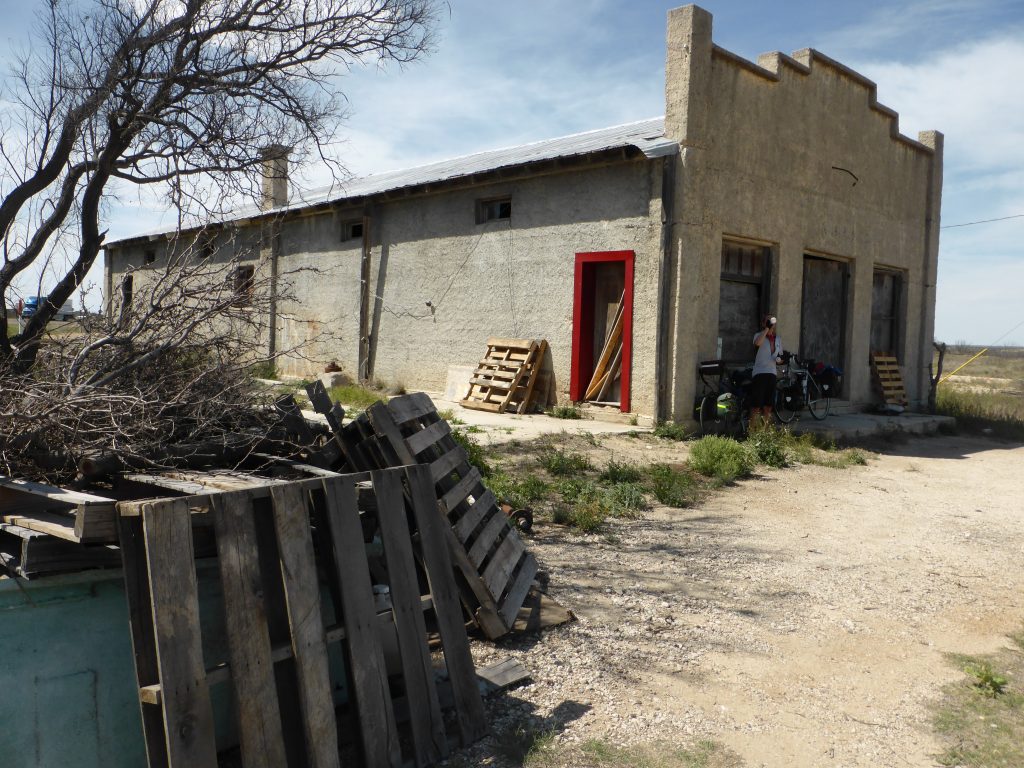
We had been warned there was nothing in Dryden and it was no exaggeration. The place looked like it had been deserted years ago. Every building appeared abandoned and was slowly collapsing into the desert. According to Wikipedia the population in 1988 was just thirteen. If they are still there then they are keeping themselves very well hidden.
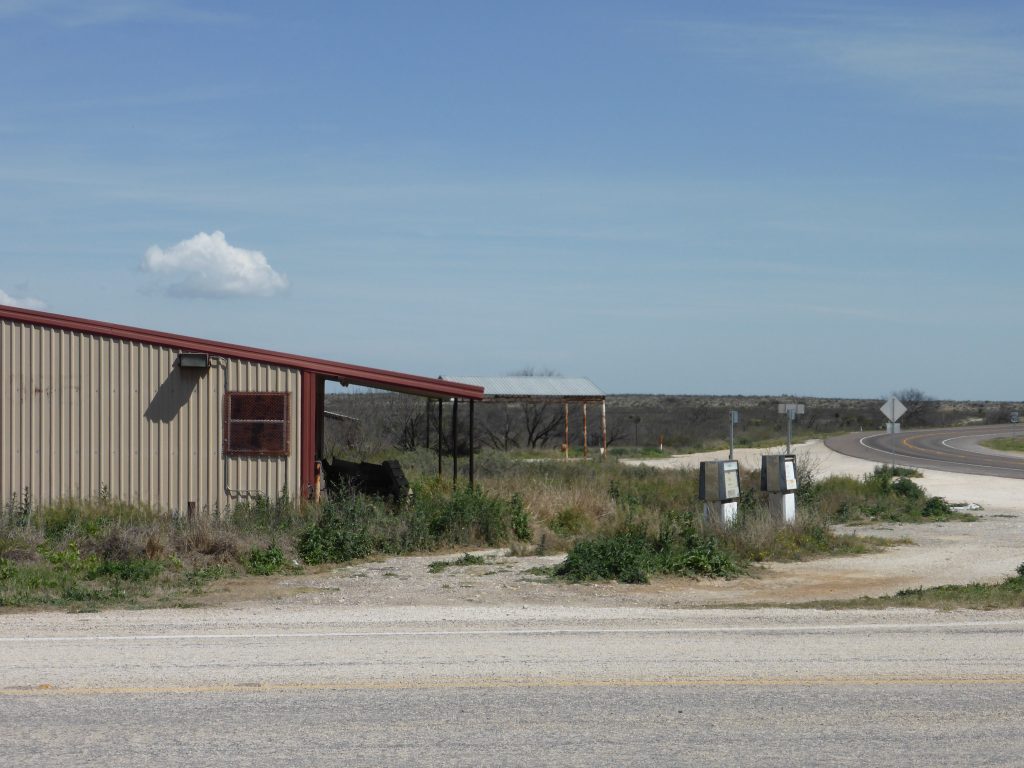
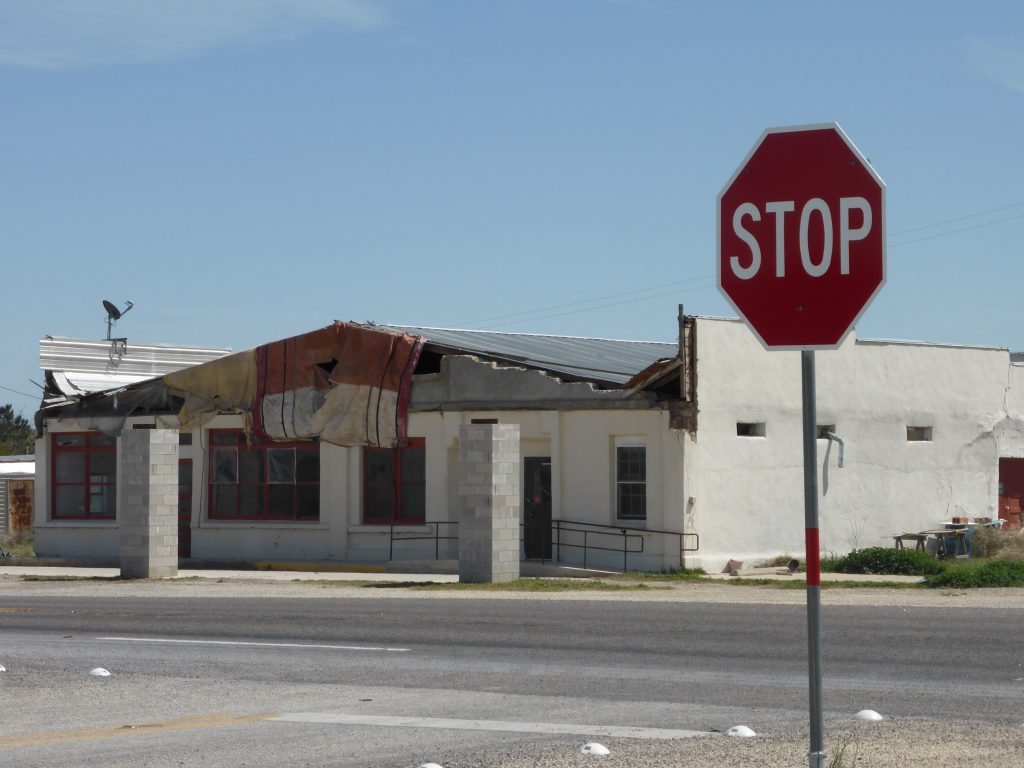
Things haven’t aways been this way. When the community was founded in 1882, named after Eugene Dryden, the chief engineer of the Galveston, Harrisburg and San Antonio Railway, the town was a centre for ranching businesses and by the early 1900s it boasted a hotel, schoolhouse, community center and a church. By 1929 the population was close to 100. But the closure of the railway depot sounded the all familiar death knell and it seems it will only be a matter of time before it vanishes altogether into the dust.
Knowing we were on a deadline to make Sanderson in time to meet Bubba, Terry pulled ahead, or at least I thought he had. Climbing through the barren landscape in the searing heat I began to feel increasingly unwell, weariness mixed with a headache meant my pace fell dramatically and a couple of times I seriously considered looking for somewhere shady to lie down and wait for the height to subside – even if that meant hanging around for nightfall.

At one point I started filming myself talking about the situation and listening back I sound almost delirious. I talk about the heat and explain that Terry is probably miles ahead without realising my cycling companion is in shot just behind me! Apparently he’d been waiting by the side of the road for me to catch up and I’d ridden straight past, head and spirits on the floor and had not even noticed him.
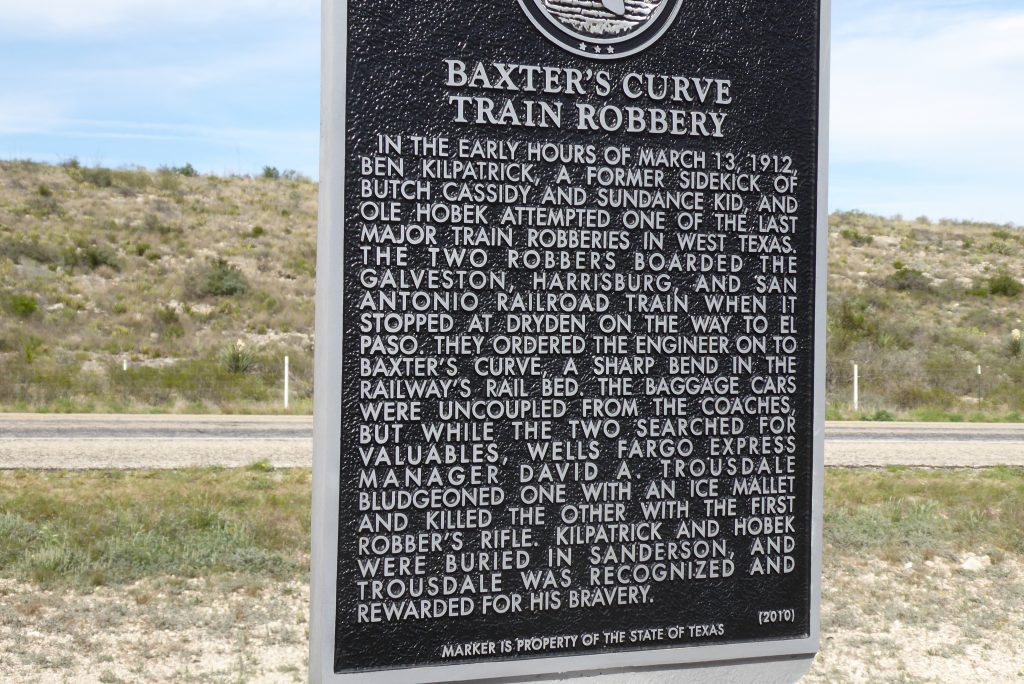
With the 6pm deadline looking shaky, Terry raced on ahead and found Bubba’s Pampered Pedaler’s camped out at the Sanderson High School and preparing to tuck into a banquet of ribs, salad and puddings. Doubling back he found me just about collapsed on the road and led me to salvation. The arrangement was simple – in return for a hot meal and a bed for the night all Bubba required from us was to give a short talk to the 50 plus riders about our adventure. Bubba, a larger than life character whose life had been transformed by riding the Trans-Am, said he would never turn away a fellow touring cyclist.
As I staggered into the school I could hardly string two words together. We were both running on empty, but it’s amazing what a great meal and good company can do. To make things even better Lloyd and Louis were there too. They’s stopped early as they knew we were heading to Sanderson. What great chaps, although if they didn’t make the record we knew we’d feel forever responsible!
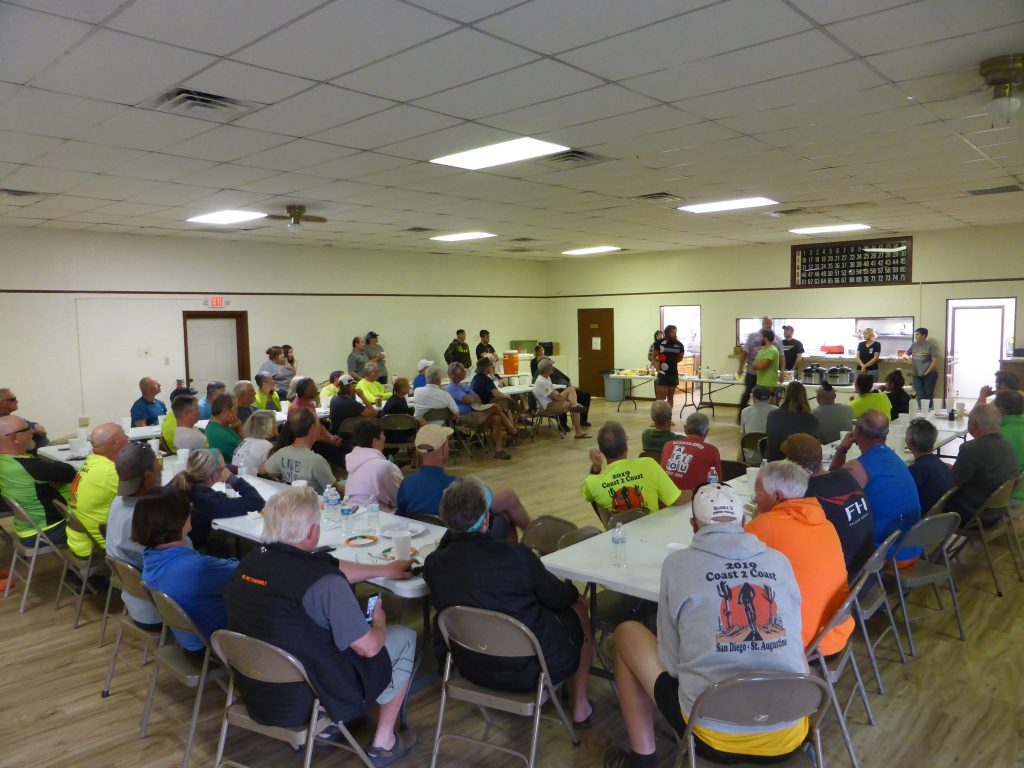
Bubba’s Pampered Pedalers really did live up to their name. Riding a 52 day supported Coast to Coast tour from San Diego to St Augustine, the $10,000 fee buys a travelling entourage carrying your tent, a thick air mattress and a deluxe camp chair (all set up in advance at your nightly destination), back up vehicles, baggage transportation, an on-hand professional bike mechanic, free laundry twice a week and – best of all – a professional chef cooking breakfast and dinner.
It may sound a lot of money, but imagine not having to carry panniers for 3,000 miles, not having the daily worry of finding somewhere to sleep, meals provided as soon as you arrive – and a laundry service. If we weren’t sold before, we certainly were after the meal and we both decided never to travel without our own chef ever again. Our ramen noodle days were done!
“Bubba had given us a fabulous taste of Trail Magic, just when we needed it most”.
After meeting only a handful of Southern Tier riders over the past month or so, suddenly we were in a room full of them and we chatted to as many as possible while we tucked into platefuls of food. By the time we were called up to address the group we were on a high and somehow our rather comic approach brought the house down. Terry and I have often reflected on how we’ve become a bickering married couple – and it was a routine that proved comedy gold to our new-found American friends.
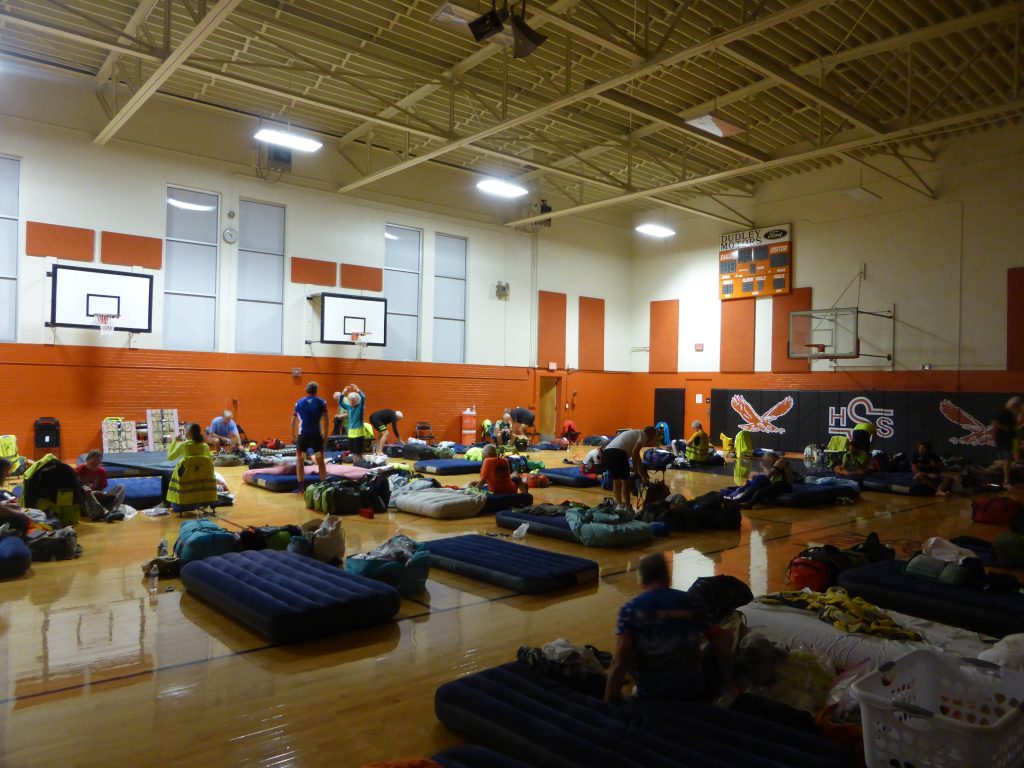
After dinner we chatted to Bubba about life, the universe and the transformational nature of the TransAm. By the time we made it to the gym, where huge airbeds had been inflated by a couple of the staff (there were seventeen in all!), most people were already crashed out in time for the 9pm lights out deadline. A quick dash to the showers and we disappeared into an air-bed induced sleep. Bubba had given us a fabulous taste of Trail Magic, just when we needed it most.
Today’s miles: 60.99
Miles since Anastasia State Park: 1,763.38
